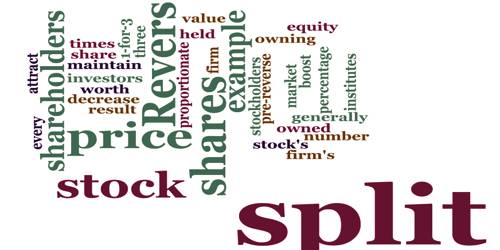The major objective of this report is to analysis Assessing Performance and Enhancing Motivation on Business Fundamentals. Other objectives of this reports are to apply our theoretical knowledge in practical area of institutions, to study the motivation of the institutions, to draw a comparable picture of the theoretical approach and the practical application of motivation in any institution. Finally this report make swot analysis Assessing Performance and Enhancing Motivation on Business Fundamentals.
Objective of the study
To be honest, the objective of the study is to fulfill the requirement of our course on “Business Fundamental & Management”. However this might not sound good. Therefore the objective behind conducting this study is as follows:
- To apply our theoretical knowledge in practical area of institutions.
- The main objective of this paper is to study the motivation of the institutions.
- To draw a comparable picture of the theoretical approach and the practical application of motivation in any institution.
What is motivation?
The word “motivation” is often used to describe certain sorts of behavior. Motivation can be defined as a concept used to describe the factors within an individual which arouse, maintain and channel behavior towards a goal. The processes that leads to an individual to exert high level of effort to reach organizational goals, conditioned by the effort’s ability to satisfy some individual need. Motivation is a temporal and dynamic state that should not be confused with personality or emotion. Motivation is having the desire and willingness to do something. A motivated person can be reaching for a long-term goal such as becoming a professional.In psychology; it refers to the initiation, direction, intensity and persistence of behavior.
Necessity of motivation in corporate world:
Today’s world is very much competitive. Business world try to finish their commitment quickly and accurately by doing some effective things. Motivation is one of them.
Motivation is general term applying to the entire class of drives, desires, needs, wishes and similar forces. To say that managers motivate their subordinates is to say that they those things which they hope will satisfy these drives and desires and induce the subordinates to act in a desired manner.
In the banking sector motivation is very much key things. Because they want to do their work successfully. So they motivate their employee by doing some things attractively.
Types of motivation:
Different types of motivation are used by business to encourage their employees. It is very much important to a firm. There are mainly three types of motivation.
Monitory motivation:
One of the fruitful motivations is monitory. Business can motivate their employee by using these kinds of motivation. Different types of monitory motivation are:
- Fair wages.
- Profit sharing.
- Financial security.
- Accommodation facilities.
- Transportation facilities.
- Medicare facilities.
- Rationing facilities.
- Canteen facilities.
Non-monitory motivation:
Another type of motivation is non-monitory motivation. Sometimes it is so much effective than monitory motivation. Special types of non-monitory motivation are:
- Personal power and rights.
- Fait working environment.
- Attractive work.
- Fair treatment.
- Appreciation of worthwhile work.
- Training facility.
- Democratic management.
- Opportunity to participation in ownership.
- Establishing equity.
- Granting union right.
- Goodwill of the organization.
- Creating education facilities.
Social motivation:
Social motivation is one types of motivation. Employees can be motivated by socialism. Different types of social motivation are:
- Social status.
- Social corporate responsibility.
- Social response from people.
- Role in business market.
- Legal and illegal response.
Early Theories of Motivation
The Hierarchy of needs: (“A Theory of Human Motivation” by A. H. Maslow in Sutermeister)
The hierarchy of needs theory is based on the premise that people are motivated by the desire to fulfill their needs. People seek goals to satisfy their needs. Once a need has been satisfied, that need no longer acts as a motivator. In the absence of any other needs, there would be no motivation. According to Maslow, there are a series or levels of needs that explain motivation in people. There are five such levels of needs.
McGregor’s Theory X and Theory Y
Douglas McGregor is best known for proposing two sets of assumption about human nature: Theory X and Theory Y. Very simply, Theory X presents an essentially negative view of people. It assumes that workers have little ambition, dislike work, want to avoid responsibility, and need to be closely controlled to work effectively. Theory Y offers a positive view. It assumes that workers can exercise self-direction, accept and seek out responsibility, and consider work to be a natural activity. McGregor believed that theory Y assumptions best captured the true nature of workers and should guide management practice.
McGregor himself held to the belief that the assumptions of theory Y were more valid than those of theory X. Therefore, he proposed that participation in decision making, responsible and challenging jobs, and good group relations would maximize employee motivation.
Hertzberg’s Motivation-Hygiene Theory
Fredrick Hertzberg’s motivation hygiene theory proposes that intrinsic factors are related to job satisfaction and motivation, whereas extrinsic factors are associated with job dissatisfaction.
Hertzberg concluded from his analysis that the replies that the people gave when they felt good about their jobs were significantly different from the replies they gave when 6hey felt bad. Certain characteristics were related to job satisfaction and others to job dissatisfaction. Those factors related to job satisfaction were intrinsic factors and included things such as achievement, recognition, and responsibility. When people felt good about their work, they tended to attribute these characteristics to themselves. On the other hand, when they were dissatisfied, they tended to cite extrinsic factors such as company policy and administration, supervision, interpersonal relationships, and working conditions.
The extrinsic factors that create job dissatisfaction were called hygiene factors. When these factors are adequate, people won’t be dissatisfied, but they won’t be satisfied (or motivated) either. To motivate people on their jobs, Hertzberg suggested emphasizing motivators, the intrinsic factors that increase job satisfaction.
Contemporary Theories of Motivation
The theories that are prevailing in today’s management practice are: three needs theory, goal-setting theory, reinforcement theory, designing motivating jobs, equity theory and expectancy theory.
Three-Needs Theory
David McClelland and others have proposed the three-need theory which says there are three acquired needs that are major motives in work. These three needs include the need for achievement (nAch), which is the drive to excel, to achieve in relation to a set of standards, and to strive to succeed; the need for power (nPow), which is the need to make others behave in a way that they would not have behaved otherwise; and the for affiliation (nAff), which is the desire for friendly and close interpersonal relationships.
Goal-Setting Theory
There is a substantial support for the proposition that specific goals increase performance and the difficult goals, when accepted, results in higher performance than do easy goals. This proposition is known as goal setting theory.
Intention to work toward a goal is a major source of job motivation. Studies on goal setting have demonstrated that specific and challenging goals are superior motivating forces. Specific hard goals produce a higher level of output than does the generalized goal of “do your best”. The specificity of the goal itself acts as an internal stimulus. For instance, when a bank employee commits to make eight new accounts or FDR’s weekly, this intention gives him a specific goal to try to attain.
Reinforcement Theory
In contrast to goal-setting theory, reinforcement theory says that behavior is a function of its consequences. While goal setting theory proposes that an individual’s purpose directs his or her behavior, reinforcement theory argues that behavior is externally caused. What controls behaviors are rein forcers, consequences that, when given immediately following a behavior, increase the probability that the behavior will be repeated?
The key to reinforcement theory is that it ignores factors such as goals, expectations, and needs. Instead, it focuses solely on what happens to a person when he or she takes some action.
Designing Motivating Jobs
Because managers are primarily interested in how to motivate individuals on the job, we need to look at ways t design motivating jobs. We use term job design to refer to the way tasks are combined to form complete jobs. The jobs that people perform in an organization should not evolve by chance. Managers should design jobs deliberately and thoughtfully to reflect the demands of the changing environments, the organizations technology, and its employees skills, abilities, and preferences. Real motivating jobs can be made by using job enlargement or job enrichment techniques.
Equity theory
Equity theory, developed by J. Stacy Adams, proposes that employees perceive what they get from a job situation in relation to what they put into it and then compare their inputs –outcomes ratio with the inputs-outcomes ratios of relevant others. If an employee perceives her ratio to be equal to those of relevant others, a state of equity exists. In other words, she perceives that her situation is fair-that justice prevails. However, if the ratio is unequal, inequity exists and she views herself as under rewarded or over rewarded.
Expectancy Theory
The most comprehensive and widely accepted explanation of employee motivation to date is Victor Vroom’s expectancy theory. Although the theory has its critics, most research evidence supports it.
Expectancy theory states that an individual tends to act in a way based on the expectation that the act will be followed by a given outcome and on the attractiveness of that outcome to the individual. It includes three variables or relationships
- Expectancy or effort performance linkage is the probability perceived by the individual that exerting a given amount of effort will lead to a certain level of performance.
- Instrumentality or performance reward linkage is the degree to which the individual believes that performing at a particular level is instrumental in attaining the desired outcome.
- Valance or attractiveness of reward is the importance that the individual places on the potential outcome or reward that can be achieved on the job. Valance considers both the goals and needs of the individual.
A Elements of an integrated motivation program:
It follows a 6-step approach to creating an integrated motivational program. It is established in the belief that employees can be both high performers and personally satisfied. The 6 elements are-
- Establish performance goals.
- Remove obstacles.
- Recognize & correct appropriately.
- Individualize the recognition.
- Reward equitably.
- Provide effective feedback.
The key assumptions inherent these 6 elements are:
- Employees start out motivated. A lack of motivation is often fostered by misunderstood or unrealistic expectations.
- The role of management is to create a supportive, problem- solving work environment in which necessary resources to perform a task are provided.
- Rewards should encourage high personal performance that is consistent with management objectives.
- Motivation work best when it is elf generated.
- Individuals should be treated fairly.
- Individuals deserve timely, honest feedback on work performance.
Establish performance goal:
Managers should provide continuous assessment of the motivational climate of their work environment by asking, do employees understand & agree with the performance expectation.
The foundation of an effective motivation program is proper goal setting.
Goal setting: Goals must be considered carefully. The critical consideration regarding the goal setting process is that goals must be understood & accepted if they are to be effective. Have three critical components-
- Goal setting process
- Goal characteristic&
- Feedback
Goal characteristics: Research has shown that goal characteristics have significantly affected the likelihood that the goal will be accomplished. Effective performance goals have these smart features:
Specific: Goals should be specific rather than vague. Example: increase sales by 10%’.
Measurable: Goals should incorporate an agreed measure or standard. This may be quantitative, ` Increase sales by 10%’or qualitative, `using a standard’.
Agreed: Getting the job holder commitment is a key to setting effective targets.
Realistic: Goals should be challenging but not beyond the reach of the employees. Lf accepted, difficult goals lead to better performance than easy goals.
Time-framed: Goals should have a time frame or time limit. Example-`increase sales by 10% by the end of the year.’
Feedback: Feedback provides opportunities for clarifying expectations, adjusting goal difficulty gaining recognition.
Remove obstacles:
After setting goals, the managers should shift focus to facilitating successful accomplishment. This can be done by asking, do employees feel it is possible to achieve this goal?’ Help from management must come in many forms, including-
- Making sure the person has the required abilities for the job
- Providing the necessary training
- Securing the needed resources
- Encouraging co-operation&
- Support from other work units
It is the manager’s job to make the paths leading towards the targeted goals.
Recognize & correct appropriately:
An effective motivational program is based on three related principals:
- Managers should help create a motivating environment.
- They should link recognition and rewards to performance.
- They should use rewards and recognition with high performance behaviors.
Technological constraints sometimes make it difficult to link rewards and individual performance perfectly. In this situation, rewards linked to the performance of the work group will foster group cohesion and collaboration and partially satisfy the individual members’ concern about fairness.Effects of managers’ response:
An effective motivational program goes beyond the design of the organizational reward system.
Managers’ daily interactions with employees constitute powerful individual motivators.
It is difficult for even highly sensitive and aware managers to understand fully the impact of their action on the behaviors.
Improving behaviors:
The mark of exceptional mangers is their ability to foster exceptional behavior in their employees. His is best accomplished by using a –step behavior improvement process these are organized into three broad initiatives:
- Recognize
- Reflect
- Redirect
Recognize:
- Identify rewards that are unique to individual
- Link the attainment of desirable outcomes with incremental, continuous improvement.
- Rewards all improvements in performance in a timely and honest manner.
Reflect:
- Describe the behaviors or standards you expect.
- Ask if the individual is in agreement.
- Be appropriately supportive.
Redirect:
- Identify the specific inappropriate behavior.
- Point out the impact of problem on the performance of others.
- Ask question about causes and explore remedies.
Evaluating work performance problem:
A good manager needs to have model to guide the inquiry process. Vroom has summarized the determinants of task performance as follows:
Performance= Ability*
Where,
Ability= aptitude*training*Resources
Motivation= Desire*commitment.
Performance problem: ability or motivation?
Low ability is generally associated with very difficult tasks, overall low individual ability, and evidence of strong effort and lack of improvement over time.
Three signs of lowered ability:
The following are dangers signals for managers-
- Taking refuge in a specialty
- Focusing on past performance
- Exaggerating aspects of the leadership.
Remedies for lack ability problems:
For overcoming poor performance problems due to lack of ability five principals are suggested:
- Re supply
- Retrain
- Refit
- Reassign
- Release
Individualize and recognition:
Performance will be enhanced only to the extent that the rewards attached to it are personally valued by the recipient. The evaluative question then is, do employees feel the rewards used to encourage high performance are worth the effort”
One of the biggest mistakes that can be made in implementing a reward system is assuming that managers understand their employees’ preferences.
The difficulty many managers have in predicting what rewards will be most attractive to their employees is illustrated in the following figure
Order of importance of various job factors
| JOB FACTORS | SURVEY OF EMPLOYEES | SURVAY OF BOSSES |
| Full appreciation of work done | 1 | 8 |
| Feeling of being in on things | 2 | 10 |
| Sympathetic help on personal problems | 3 | 9 |
| Job security | 4 | 2 |
| Good wages | 5 | 1 |
| Interesting work | 6 | 5 |
| Promotional growth | 7 | 3 |
| Personal loyalty to employee | 8 | 6 |
| Good working conditions | 9 | 4 |
| Tactful disciplining | 10 | 7 |
Internal job Characteristics:
Although managers control the components of job, they have no direct control over weather a employee finds a job interesting.
Job design is a process of matching job characteristics and employees’ skills and interests. One popular job design model proposes that particular job dimensions cause employees to experience specific psychological reactions called states.
A variety of empirical research has found that the five core job dimensions-
- Skill variety
- Task identity
- Task significance
- Autonomy and
- Feedback are
The more variety in the skills a person can use in performing work, the more the person perceives the task as meaningful or worthwhile.
The more autonomy in the work, the more responsibility employees feel for their successes or failures.
Finally the more feedback individuals receive about how well their jobs are being performed, the more knowledge of results they have.
By enhancing the core dimensions and increasing critical psychological states, employees’ job fulfillment is increased.
Five ways to better jobs:
Five managerial action guidelines that can help increase desirable personal and work outcomes are:
- Combine tasks
- Create Work teams
- Establish client connections
- Develop accountability
- Encourage open feedback
Reward equitably
Once appropriate rewards have been determined for each employee, managers must then consider how to distribute those rewards. This brings us to concerns about equity
- Any positive benefits of relevant rewards will be negated if employees feel they are not receiving their fair share.
- The relevant evaluative question here is,`Do employees feel that work related benefits are distributed fairly?’
Provide effective feedback:
This leads us to the final elements in an integrated motivation programme:
- minimizing the time lag between behaviors and feedback
- providing accurate feedback
The last assessment questions contain two parts. The firsts ssis: are we getting the most out of our rewards and recognition by administering them on a timely basis as part of the feedback process?
A performance review mode
- Effective managers understand the importance of immediate spontaneous reward.
- They use formal performance evaluation process to discuss long term trends in performance
- solve problems inhibiting performance
- set performance goals
Content and Intent Of Feedback
The second question related to feedback is, Do employees know where they stand in terms of current performance and long term opportunities?’ in addition to the timing of feedback , the content of that feedback and the motivation guiding the feedback process can have a powerful impact on the target individuals willingness and ability to improve.
- If the content is inaccurate, improvement is frustratingly difficult
- If the message is masked in subterfuge and obscured by mixed signal, the credibility of the entire motivational system is undermined.
















